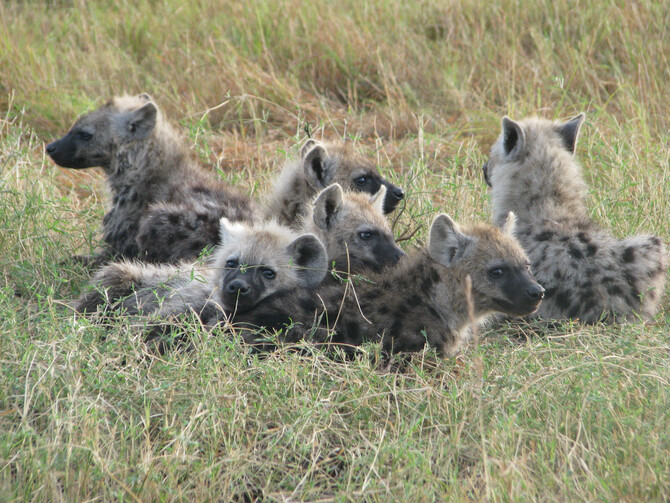Making Friends of Friends Benefits Hyenas, Penn Biologist Finds
Bonding with a friend of a friend is something most humans gravitate toward naturally, or at least Facebook likes to think so every time it suggests friends for you to “friend.”
But a certain four-legged predator, the spotted hyena, seems to know the benefits of this type of social bonding instinctively, according to a new study from researchers at the University of Pennsylvania, the National Institute for Mathematical and Biological Synthesis and Michigan State University that considers the structural factors affecting the social network of these animals.
Researchers collected more than 55,000 observations of social interactions of spotted hyenas during a 20-year period in Kenya, making this one of the largest studies to date of social network dynamics in any non-human species.
The scientists found that cohesive clustering of the kind in which an individual bonds with friends of friends, something scientists call “triadic closure,” was the most consistent factor influencing the long-term dynamics of the social structure of spotted hyenas.
Individual traits, such as sex and social rank, and environmental effects, such as the amount of rainfall and the abundance of prey, also matter, but the ability of individuals to form and maintain social bonds in triads was key, according to the study, which appeared in the journal Ecology Letters.
The work was led by Amiyaal Ilany, a postdoctoral researcher in the School of Arts and Sciences’ Department of Biology at Penn, who conducted the research as a postdoctoral fellow at the National Institute for Mathematical and Biological Synthesis. His co-authors were doctoral candidate Andrew S. Booms and zoology professor Kay E. Holecamp, both of Michigan State. Ilany now works in the lab of Erol Akçay, an assistant professor of biology at Penn.
“Cohesive clusters can facilitate efficient cooperation and hence maximize fitness, and so our study shows that hyenas exploit this advantage,” Ilany said. “Interestingly, clustering is something done in human societies, from hunter-gatherers to Facebook users.”
Hyenas can live as long as 22 years. They typically live in large, stable groups known as clans, which can comprise more than 100 individuals. Socially sophisticated animals, these predators can discriminate maternal and paternal kin from unrelated hyenas. According to the study, they are also selective in their social choices, tending to not form bonds with every hyena in the clan, rather preferring the friends of their friends.
The research found that males follow rigid rules in forming bonds, whereas females tend to change their preferences over time. For example, a female might care about social rank at one time but then later allow rainfall amounts to influence her choice.
“In spotted hyenas, females are the dominant sex and so they can be very flexible in their social preferences,” Holecamp said. “Females also remain in the same clan all their lives, so they may know the social environment better. In contrast, males disperse to new clans after reaching puberty, and after they disperse they have virtually no social control because they are the lowest ranking individuals in the new clan, so we can speculate that perhaps this is why they are obliged to follow stricter social rules.”
Knowing why and how these animals form lasting relationships can help scientists better understand cooperation patterns and the consequences of sociality in other species.
The researchers used a new, more comprehensive method than those used in earlier studies, a type of mathematical modeling typically found in sociology, to arrive at their findings about the social world of the spotted hyena.
This more dynamic approach allowed the researchers to evaluate the simultaneous effects of multiple factors — environmental, individual, genetic and structural — on network dynamics. It also gave the researchers insight into how or why the social structure changes over time and to isolate the factors that shape the structure. The method represents a major advance over methods used in previous studies of animal social networks where more static approaches have typically been applied.
The study was supported by the National Science Foundation, U.S. Department of Homeland Security, U.S. Department of Agriculture, University of Tennessee, Knoxville, and National Institutes of Health.








